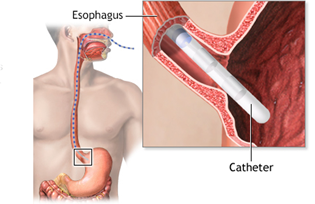Your esophagus moves food from your throat down to your stomach with a wave-like motion called peristalsis. Manometry will indicate how well the esophagus can perform peristalsis. Manometry also allows the doctor to examine the muscular valve connecting the esophagus with the stomach, called the lower esophageal sphincter, or LES. This valve relaxes to allow food and liquid to enter the stomach.
It closes to prevent food and liquid from moving out of the stomach and back up the esophagus.
Abnormalities with peristalsis and LES function may cause symptoms such as swallowing difficulty, heartburn, or chest pain. Information obtained from manometry may help doctors to identify the problem. The information is also very important for surgery to treat reflux.

